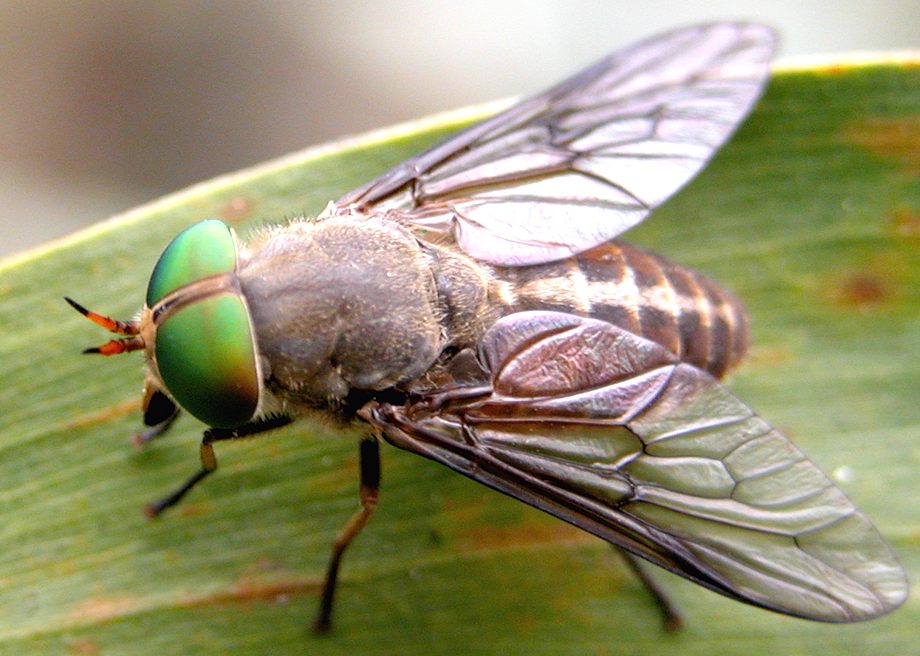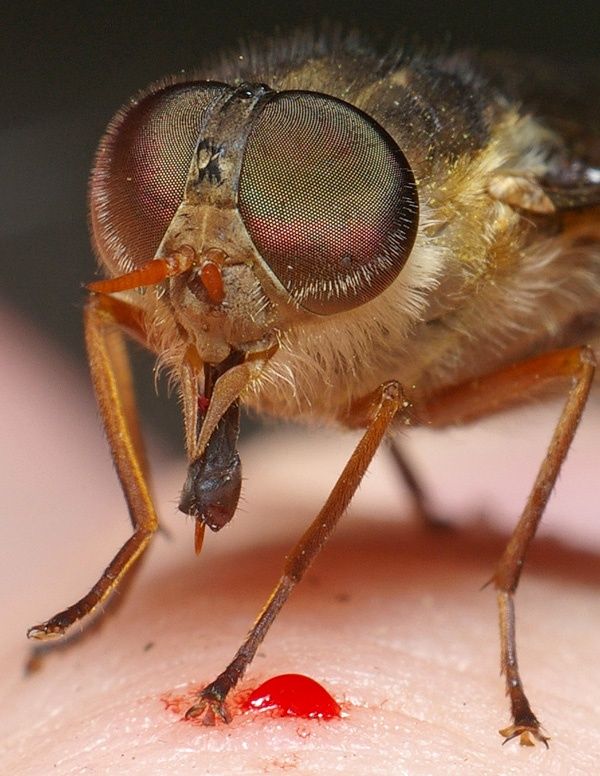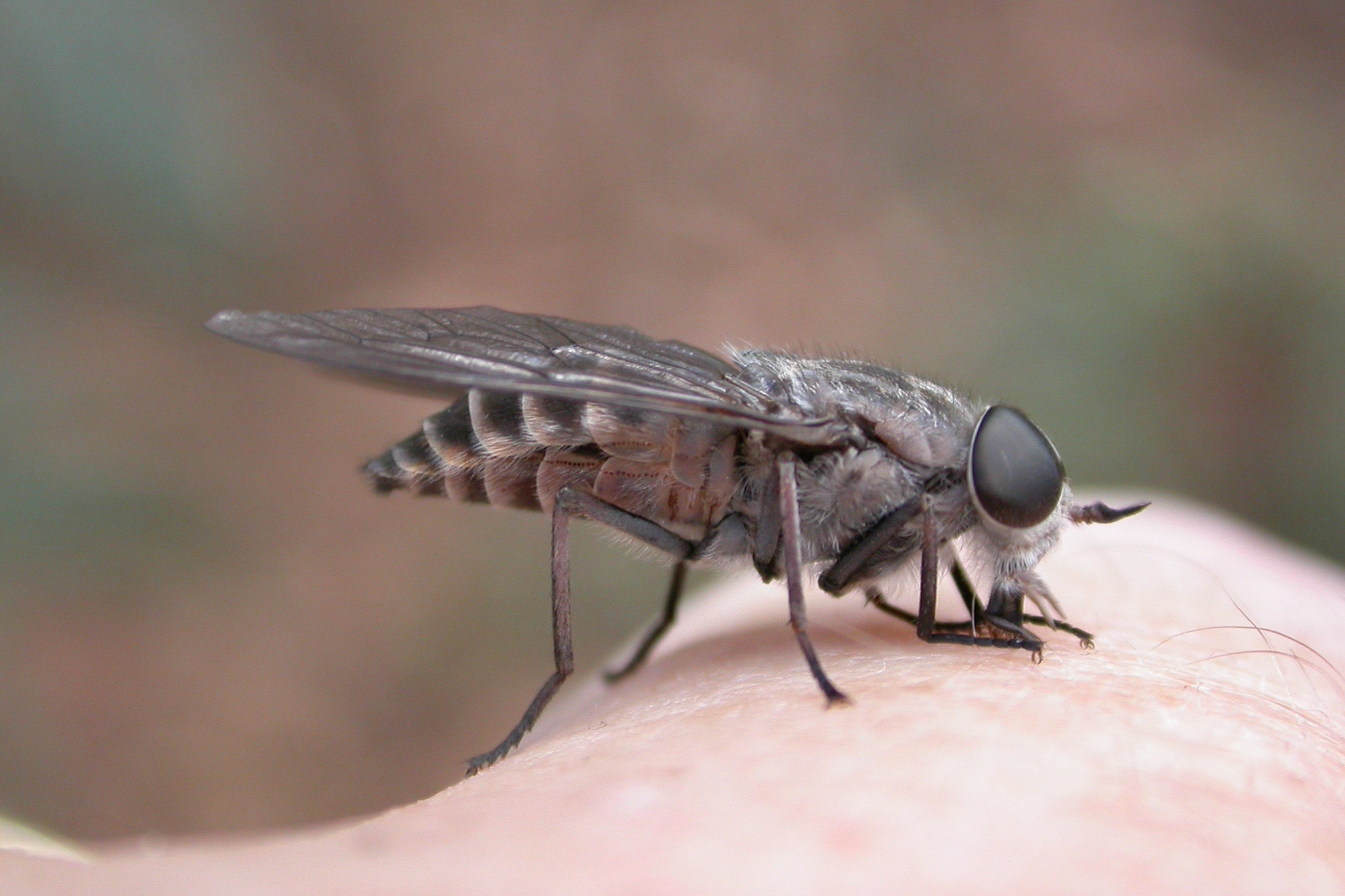March flies, are common across in the Blue Mountains during summer and are known for their short, sharp and stinging bite. Many a time have we felt the shock of a bite on your leg and then been surprised when you look down to find the culprit is a fly. There are about 400 species of March fly in Australia, and while some simply feed on flower nectar and pollen, the majority prefer to pierce our skin at mealtime.
A close relative of wasps and bees, March flies are a species of fly known for their short stature, short lifespan and short-tempered nature. March flies are found throughout Australia and females lay batches of 100 to 600 eggs on grasses and other vegetation—and although there is some variation from region to region, March flies typically live only one or two weeks. March flies live around freshwater creeks, intertidal estuaries and mangroves.
What do March flies look like?
They’re brown and have yellow bellies. They’re relatively large, and they fly in erratic circles around your head. The first time you see one, you might think it’s an insect with serious learning difficulties—the second time, you might think it’s an insect with serious personality problems. It isn’t until your third encounter that you realise March flies are just doing their thing: buzzing around until someone gives them a hand by swatting them down!
Where do March flies live?
As you might expect, these little critters do not thrive in freezing conditions. They’re not native to Australia and make their way here each summer, where they can feed on other pests like mosquitoes that are more common at that time of year. The females use their stinger-like mouthparts to pierce soft skin and lap up blood while laying eggs. In humans, they are most often found around hair and clothing but bites have been known to happen anywhere on exposed skin.
As with most biting flies, it is only the female march flies that bite as they need blood to produce the next generation. They use their strong, piercing mouthparts like a needle to extract blood from their mammal hosts. The males have larger metallic green eyes and feed on nectar.
The maggot larvae are quite aggressive and efficient predators too. They have sharp mandibles (mouthparts) and inject their prey with venom. The venom immobilises the prey almost instantly and helps to liquefy the tissues, which are then sucked out, leaving just an empty skin. The prey is usually the larvae of other insects, however, they are also known to be cannibalistic. March fly larvae can bite if handled.
How do you treat a March fly sting?
First, stay calm. March fly bites can cause severe allergic reaction in some people. It’s natural to want to kill these stinging pests when they bite—especially if it happens on your sensitive areas—but by killing one, you’re just causing more of them to come and settle there. Calmly brush or flick off any March flies that are on you (not near your face) or slowly walk out of their area and into somewhere else where there aren’t any around.
Symptomatic treatment, including the application of an ice pack and use of an antihistamine, may offer relief from painful bites. Scratching the bites can result in a secondary bacterial infection that may require the application of antiseptic cream or the use of antibiotics.
People with a severe allergic reaction should seek urgent medical assistance and advice.
Preventing being bitten
The simplest way to prevent being bitten by a March fly is to cover up with appropriate clothing and/or apply an effective repellent product.
The following information may further assist in reducing March fly bites:
- March flies are known to be attracted to dark blue, so it is advisable to avoid wearing blue and other dark colours. Long, light-coloured, loose fitting clothing, including head nets, is likely to provide the most effective protection for humans when March flies are present.
- Insect repellents are another important means of protecting yourself against March flies, but will vary in their effectiveness depending on the species of March fly.
- When outdoors, use an insect repellent containing either diethyltoluamide (DEET) or picaridin if March flies are active.
- Lotion or gel repellents are the most effective. Always read the label. Apply and re-apply repellents in accordance with the manufacturer’s instructions.
- Repellent reapplication may be required after swimming, as the product may wash off.
- Natural or organic repellents are generally not as effective as DEET or picaridin and may need to be applied more frequently.
- The best protection for babies and young children is to dress them in protective clothing, socks and shoes, and use other forms of insect screening.
- Repellent application is not recommended in children under the age of 12 months of age. Repellents containing up to 10% DEET or picaridin can be used on children from 12 months.
- Correct application of insect repellent (Healthy WA) is critical in ensuring the product remains effective.
- People with a history of severe allergic reactions to March fly bites should avoid travel to or work in locations and at times of the year when they have previously experienced such allergic reactions.




